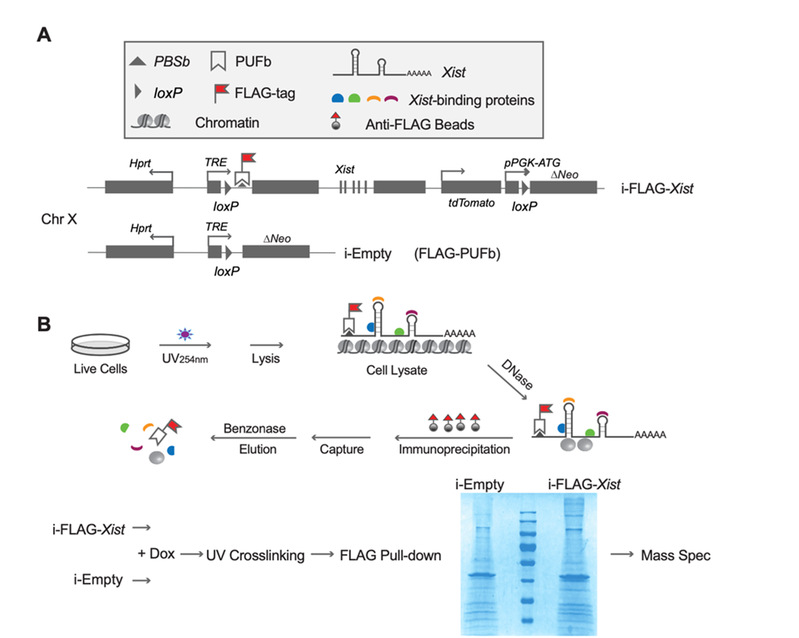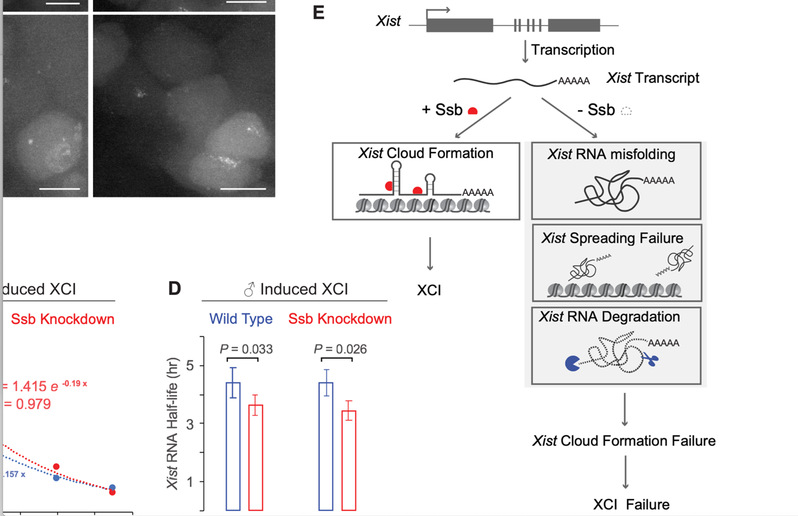New Findings by Chen Lingyi's Team at the Institute of Translational Medicine, Tianjin Union Medical Center, NKU
In mammalian cells, there is potential imbalance in the number of sex chromosomes between males and females. Mammalian cells use to achieve Dosage compensation is achieved in in mammals by X chromosome inactivation (XCI), that is, one X chromosome in female cells remains active but the other X chromosome is inactivated. X-inactive specific transcript (Xist) RNA is an important long non-coding RNA (lncRNA) that initiates XCI. In the beginning of XCI, Xist RNA is transcribed from the X chromosome (Xi) that is about to be inactivated and covers Xi to form Xist cloud, and then recruits a series of epigenetic factors to inactivate Xi. There is no doubt that the discovery of the protein that interacts with Xist RNA is crucial to explain the mechanism of X chromosome inactivation.

On November 1, 2021. the research team of Chen Lingyi from the Institute of Translational Medicine, Tianjin Union Medical Center of NKU and the research team of Zhang Lifeng from Nanyang Technological University in Singapore jointly published an article entitled “The lupus autoantigen La/Ssb is an Xist-binding protein involved in Xist folding and cloud formation” in Nucleic Acids Research. Norbert Ha from Nanyang Technological University in Singapore and Nan Ding from NKU are the co-first authors of this article.

“Flag-out” System
In this study, the researchers identified 138 candidate Xist binding proteins by using FLAG-out. Then, in an experimental system for artificially inducing XCI in male embryonic stem cells (ES cells) and differentiating and inducing XCI in female ES cells, the effects of Ssb knockdown on XCI were proved. Next, the researchers used ATAC-seq experiments to show that after Ssb knockdown in male ES cells, the tightness of the X chromosome decreased slightly. In female cells, after Ssb knockdown, X-linked genes cannot be effectively silenced. More importantly, after Ssb knockdown, a normal-sized Xist cloud cannot be effectively formed. The researchers further proved that the RNA chaperone domain (RCD) in Ssb is extremely important for the function of Ssb in XCI, suggesting that Ssb as an RNA chaperone plays an important role in the folding of Xist RNA. The SHAPE-Map experiment confirmed that Ssb knockdown affects the conformation of Xist RNA, and reduces the stability of Xist RNA.

A model showing that Ssb participates in Xist folding and Xist cloud formation
In summary, the article found that after Xist expression, Ssb is needed to help the correct folding of Xist RNA to cover the X chromosome, thereby initiating XCI; in cells with Ssb knockdown, Xist RNA is misfolded and its stability is reduced, and Xist cloud formation is abnormal, eventually leading to the failure of XCI.
Full-text link: https://doi.org/10.1093/nar/gkab1003





